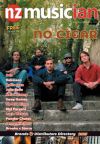Guitar Cool: Combining Chords and Scales
Guitar Cool: Combining Chords and Scales
Many guitarists think there is a division between rhythm and lead guitar styles, but in reality experienced players don’t think like that. No matter what the genre, I like to think that I am either comping (accompanying a singer or instrumentalist) or soloing, and either one can involve chords or single note lines both at the same time.
Playing chords and notes in combination does however create some issues for players because it is not easy to change from chords to notes and back again cleanly, while keeping good time. If you persevere and can create tasty accompaniment parts, the more popular you will get and your phone will start ringing hot.
A great way to start making your accompaniments sound more interesting is to get out of the ‘play only full (five and six string) chords’ type of mentality and begin to combine partial (two and three string) chords with some pentatonic scale notes to create some really tasty rhythm parts.
Although there are not many guitarists out there who can create good accompaniments in an instant, this type of playing is just like anything else you do on guitar – it is easy with a little practice. Once you get the hang of it you will be making up some cool accompaniment parts all by yourself.
As you can see in the music this a 12 bar blues format with a chord for one bar and a few notes for one bar, which repeats six times. For the chords, I suggest you use any comfortable fingering you want as there are a few different ways to finger them, but with the notes it would be best to follow the fingering guidelines I have set for you in bar two. They will be similar for the other bars except bar nine and 10 where I have the fingers written in again.
If you are not familiar with this style of playing, it would be best to practice it in groups of two bar sequences, (Bar one and two, then three and four and so on) until you can play them cleanly with no mistakes. Once you can play the two bar sequences with no flaws slowly, put the whole thing together slowly and gradually work the tempo up on your metronome.
A lot of players say they feel exposed because the accompaniment doesn’t sound full like a bar chord or other six-string chord, but you will need to get your ear used to this style of play if you want to sound like a professional. Remember, when you are in a band your other bandmates can supply the harmonic information (like root notes, etc.) you are leaving out.
Once you have this chord and note combination under your fingers and in your brain, it would be a great idea to shift it along the neck to other keys. Once you can do that, why not see what ideas you can come up with? Just begin by changing one note in the music written here, then two and so on. To create totally different accompaniments yourself, try using any two-chord combination, like Gmi – C7, with a few notes from your pentatonic or blues scale.
To see the video of this lesson go to http://www.guitar.co.nz/category/resources/freelessons/
Kevin Downing is a professional guitarist, teacher and author based in Palmerston North. Contact details, along with many freebies are on his website at www.guitar.co.nz

